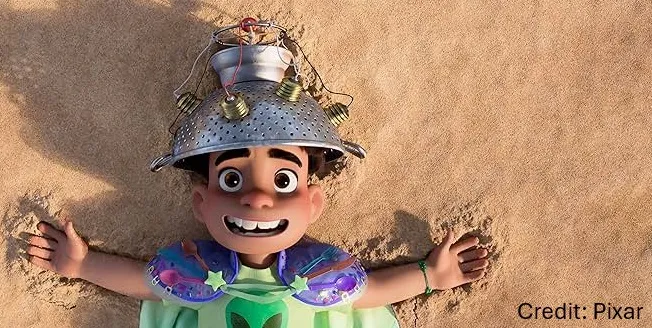When Autism Isn’t Named but Still Seen: What Pixar’s Elio Gets (Almost) Right

If you're tired of reading about autism researchers trying to compare us to mice, then here's a refreshing break from that.
Instead of another deficit-framed study or eugenic whisper wrapped in scientific language, we get Elio — Pixar’s upcoming animated film about a dreamy, misunderstood boy accidentally appointed as Earth’s ambassador to the galaxy.
The movie doesn’t say Elio is autistic. But if you’ve ever been the kid who felt too strange, too tender, too much — and not enough, all at once — then you might recognize something familiar in him.
Maria Francis’ recent piece in Trill Mag points to that recognition. She reads Elio as a kind of coded representation of autism — not diagnostic, not explicit, but resonant. She names what so many autistic viewers notice instinctively: the social misalignment, the rich interiority, the way Elio moves through the world as if tuned to a different frequency entirely. The film may never say the word “autism,” but it doesn’t have to. We see ourselves anyway.
And that’s where the praise gets complicated.
Because on the one hand: thank God for characters like this. Ones who aren’t framed as burdens, mistakes or “special interests” turned plot devices. Ones who aren’t being pushed through social skills training or cured by adventure. Just a kid — awkward, imaginative, honest — who ends up in the most absurd of situations and somehow navigates it with nothing but sincerity.
But on the other hand: why do we always have to read between the lines?
Why is it still safer — narratively, commercially, socially — to hint at autism rather than name it? Why is autistic experience only welcome onscreen when it’s allegorical, whimsical or “relatable” but rarely when it’s explicit, embodied and complex?
We’ve seen this before.
Bruno from Encanto. Matilda. Luna Lovegood. Lydia in Beetlejuice. Characters who speak our rhythm but never get our name. Characters who are only allowed to be different if their difference is framed as magic or if it makes the neurotypical characters around them grow.
It’s a double bind: we are visible but not named. Familiar but never fully recognized. Our traits are celebrated when they’re cute, metaphoric or useful — and pathologized when they’re real.
So no — Elio doesn’t solve the media representation problem. But it does offer something rare: a character who feels like us without being punished for it. And that’s not nothing.
Francis’ article gets that tone mostly right. She doesn’t force the label. She doesn’t claim the film “finally gets autism right.” She just notices. And invites others to notice too.
That’s a kind of media literacy autistic people have had to cultivate by necessity. We’ve always had to find ourselves in the margins. In side characters. In aliens, witches, robots and outcasts. Because for too long, the only stories about us were told by people trying to fix us or trying to explain us to each other.
Elio isn’t perfect representation. But maybe it’s a sign that the tide is shifting — that softness, solitude and strange wonder are finally being framed as strengths, not symptoms.
And maybe, one day, we won’t have to live in subtext.
We’ll just be there — fully, beautifully, unmistakably — on screen. And no one will flinch.
Until then, we’ll keep noticing. We’ll keep claiming. We’ll keep answering back.